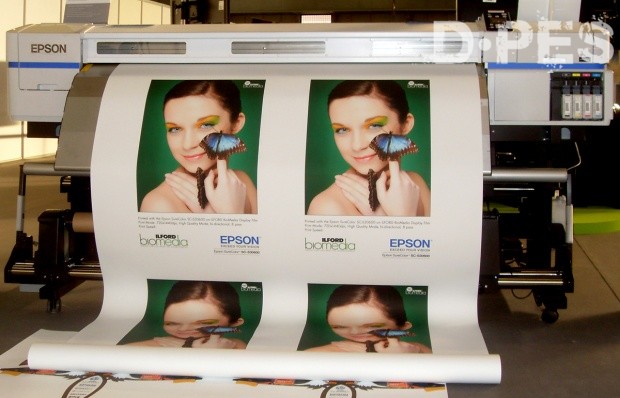Did it come as a surprise to HP when Mimaki announced its alternative ink, and called it latex? In truth, it shouldn't have done because, after all, latex is a word which has been in the dictionary for many generations with two distinctly different meanings. Firstly, it's associated with natural rubber but, of more relevance to what we're talking about here, is its role as a synthetic dispersion of polymer particles.
When HP announced its Designjet L65500 back in 2008, the machine was tagged with the description of 'latex printing technologies'. Of course, this ultimately became shortened to 'latex', and the soubriquet has stuck as more machines have come out of the HP Designjet and Scitex stables.
For the past four years HP's latex inks have been challenging the eco-solvent market and, in some sectors, it has been very successful. These machines have pretty much had the market to themselves until lately with little, if any, viable competition. People have accepted the technology's idiosyncrasies and, despite the heat requirements for using this formulation, amongst the benefits has been that for laminated jobs there's no need to leave the final print before finishing it as there's no risk of outgassing.

Some have grizzled about the power requirements needed with HP's latex printers but those who've invested in either the Designjet or Scitex versions haven't subsequently complained about vast increases in their power bills. And, with the company's head start on using this type of ink formulation, it has been able to refine the chemistry and bring improvements to the overall quality, particularly in the gamut for greater detail in darker shadows.
Nonetheless, any manufacturer leading the way with a technology is certain to have others catching up in due course. Mimaki's latex ink in its LX family, announced just before FESPA Digital, shouldn't come as a surprise and, doubtless, others will follow. The Mimaki development also has the addition of white, nosing it ahead of existing 'alternative' ink chemistries and presenting more of a challenge to eco-solvent that already incorporate this.
The past couple of years have also seen ink manufacturers, notably from the Far East, coming out with their own versions of latex ink. The first alternative I saw was at Sign Istanbul at the back end of 2010 but, thus far, threats and impact from these chemistries have been pretty much non-existent. Will this change now that we're seeing more latex and equivalent options coming online? The answer is certain to be in the affirmative, in much the same way as after-market inks for solvent and UV-curable lookalikes having become par for the course.
So HP's latex ink has not been without its rivals, even though these have taken their time to make it to market with a few false starts and hiccups along the way. Challenging the formulation have been companies like Sepiax and, in generic terms, these chemistries could be referred to as resin-based if for no other reason than that they sit in a category which doesn't have a specific nomenclature.
The concept of heat-cured hot resin ink formulations has a chequered history, with early attempts in the Encad VinylJet and the development of products like Staedtler's Lumocolor. Although the chemistries might have been relatively stable, the stumbling block tended to be the adhesion and drying and how materials were able to react with and without pre-heating. The relationship between the ink and the surface also presented a challenge and, if many doubted the efficacy of eco-solvents in their ability to stick to the material, then alternatives also proved difficult to stay put.
The key difference that segregates the majority of printer manufacturers from HP's original offering is the fact that the chemistries are designed to work with piezo-electric and not thermal print-heads. Developments are certain to continue, whether or not they happen to called latex. But it's important to consider, too, that even today's solvent-based chemistries aren't the harsh mixtures they were yesterday. Epson's latest low-priced 1.62m SureColor SC-S30600 is a classic case in point as, strictly speaking, it sits in the eco-solvent sector yet its inks are nickel-free and totally odourless. Adhesion is good, too, as is the quality for a four-colour engine.
In terms of nomenclature, you can be certain that there will be more inks coming along which, doubtless, will have titles designed to entice those wanting greener production opportunities. But ignore the name; it's what's in the formulation which is key, and how well it works compared with existing chemistries.